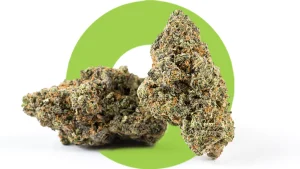Growing plants indoors using LED grow lights
3 min readIndoor plants or gardens can breathe fresh air into your décor, introducing a bit of nature into your personal living space. Vegetables can also be grown indoors, providing fresh produce even to those confined to small city apartments. However, caring for these indoor plants has always been a challenge. Even in a well-lit room, many plants do not receive enough light to fully grow. To alleviate this, most indoor growers purchase grow lights.
Traditionally, grow lighting has been incandescent or fluorescent, but in recent years there has been great progress in light-emitting diode (LED) lamps. Even for seasoned indoor growers, the benefits and limitations of using LED grow lights are not always clear. This is because Grow lights need to be used somewhat differently than standard grow lights.
Chemistry at Work – Or Not
Incandescent and fluorescent lights technically use different methods of producing light, but they share one fundamental property: the light produced by lamps is essentially a by-product of a chemical reaction. In an incandescent light bulb, this reaction is caused by electricity flowing through the filament. In fluorescent lamps, gas is used instead. Either way, there are side effects to relying on this chemistry for your glow.
First, since light is the “waste” of the reaction, much more energy must be consumed by the lamp to actually produce light. This contrasts with LEDs, which produce light directly as a result of current passing through the LED. Over time, continued use of LED grow lights tends to significantly lower energy costs.
Second, as anyone who has ever touched a light bulb as a child knows painfully, the chemical reactions that provide light in an old light bulb generate a significant amount of heat. With the amount of light required to grow indoors and the light’s ideal proximity to plants, managing the temperature so as not to burn growing plants can be difficult. LEDs generate very little heat, making overall temperature management much simpler.
Plants got what they crave
Photosynthesis can be very tricky. Different plants require different wavelengths of light at different points in their life cycle for optimal growth. Since getting accurate color from incandescent and fluorescent lights is more trouble than it’s worth, most work in a wide spectrum. In essence, energy is wasted because wavelengths that plants do not need are not utilized. LEDs come in a wide variety of colors and wavelengths, allowing for proper tuning and energy use with very little work.
Plants are also recommended to be as close to a light source as possible. The aforementioned heating problem often prevents you from getting too close, as traditional grow lights will burn your plants. Instead, keep the LEDs very close to plan so they can absorb much more light and thrive.
concerns
While the benefits are many, LEDs have some weaknesses to consider when purchasing. The first is a much narrower projection angle for the light emitted from them. This helps avoid wasted energy, but means you may need more light to cover the same amount of area. We recommend that you do not try or buy stronger LED grow lights and simply move them farther away from your plants so they cover more area. This sacrifices lighting’s greatest asset: the ability to place it very close to the plants as they grow. .
LED grow lights are also a newer technology than standard grow lights. This means two things. First, they tend to cost more per pound than other options (which is mitigated over time by lower energy costs). Second, with the products available constantly changing, it can be difficult to know which best brand and best type of LED grow light to buy. Still, with a little research, LED grow lights can be simpler to maintain and a better light source for your plants than anything else on this side of the sun!




